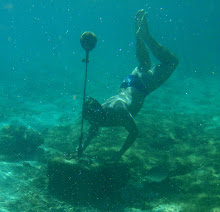
During my time here in Australia I have seen very few frogs! I have seen many more snakes than frogs .. or at least that was the case until we went on our nightly Kingfisher Park adventure. You could argue that constant rain for a few weeks should give optimal conditions for the small jumpy wet-loving creatures .. and it is a argument the frogs seemed to agree with.

Once again it was absolutely fantastic having "local" guides along, knowledge of where to look and what to listen for comes in exceptional handy when on the hunt for some night pictures. It surprised me how much of the shenanigans we found up high in trees and bushes - guess the naming, i.e. xxx Tree frog, should have been a give away ;-) and the logic probably follows an argument like, if everything is wet you can just as well get away from the predator patrolled ground and have a blast in the top of a palm tree.

As is evident from the amount of pictures - and I promise you that there are more - I had quite a few willing(?) models to practice with and I am actually very happy with the outcome of the exercise. I changed the settings of the camera slightly compared to first time I tried this type of semi-macro night shooting down in Kosciuszko National Park.

The procedure is now to force a faster flash sync speed, I use manual mode and a shutter speed somewhere between 1/160s and 1/250s to ensure that I get no motion blur, the D300 should be able to handle as fast as 1/320s, but for still sitting frogs with the 150mm it should not be needed. If you are trying this yourself, then remember to check how fast you can go and still sync your flash, google is your friend .. or give in and read the manual :-D The closer you get the more light the flash will give you! That is seriously good news, since the closer you get the shallower is your dept of field. This means that if you get in close with the flash you have enough light to close down that aperture and get more of the subject into focus. Shooting at around f/4.0 - f/4.5 I could keep an ISO setting of around 640 and still have enough light for that photon hungry sensor, not bad at all. It all sounds like I knew what I was doing, but do not worry it was all a strike of luck! :-D I was just lucky getting a usable combination of settings early on.

I am in no way a frog expert and while taking the photos I was already grueling over the trouble I would have to go through, trying to find a list of names matching what was displayed. Luckily the Kingfisher Park blog has helped me out by listing most of what we saw. With no certainty at all I will suggest that it looks like a Northern Dwarf Tree Frog in photo 3 and 4. First picture could be a Dainty Green Tree Frog and the last two pictures could be the Jungguy Frog. That leaves only the second picture ... Desert Tree Frog maybe? As always, any suggestions are welcome.


2 comments:
Excellent images Allan. Those frogs look great!
Hi Mark,
Thanks a lot, I really enjoyed getting into using the flash - next challenge will be to improve on my long lens birding technique, after seeing some of your stuff I got very inspired :-)
Cheers Allan
Post a Comment